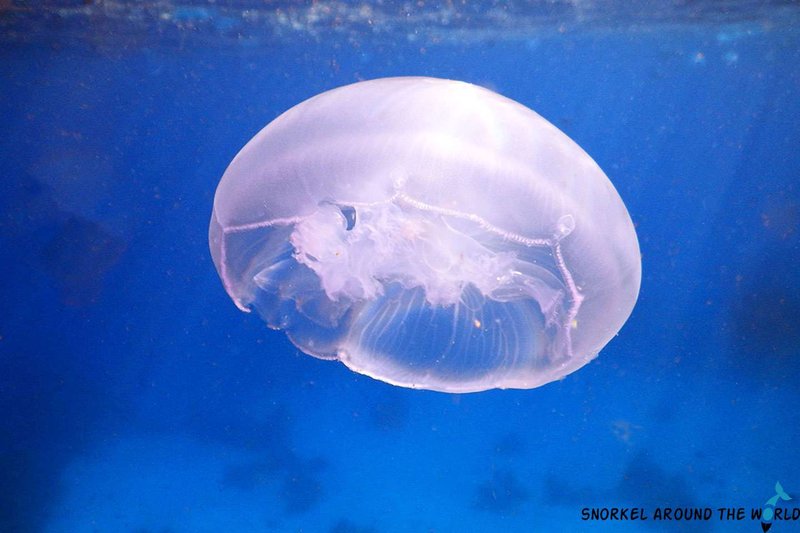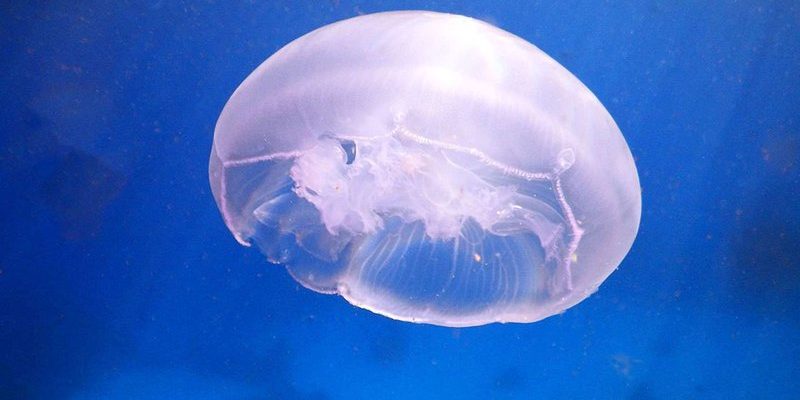
Imagine them as the ocean’s version of butterflies—beautiful, but vulnerable. Moon jellyfish rely on a specific habitat to survive, and just like any other creature, they have their fair share of challenges in the environment. From climate change to pollution, these jellyfish must navigate a world that’s becoming increasingly hostile. So, let’s dive deep and explore these common threats that moon jellyfish encounter in the wild.
Climate Change and Rising Ocean Temperatures
One of the most significant threats to moon jellyfish is climate change. As ocean temperatures rise due to global warming, the delicate balance of marine ecosystems is disrupted. Warmer waters can lead to harmful algal blooms, which can suffocate jellies by blocking sunlight or consuming the oxygen they rely on.
You might be wondering how warming waters affect jellyfish specifically. Well, moon jellyfish thrive in warmer temperatures, which might sound good at first. However, increased heat can also lead to more disease and parasites. Think of it like this: when the temperature rises, it creates a more favorable environment for parasites that can harm jellyfish populations. It’s a double-edged sword, where the very change that could help them survive also brings new dangers.
Moreover, rising temperatures contribute to habitat degradation, particularly in coastal areas where moon jellyfish spawn. As their breeding grounds diminish, so too do their chances for survival.
Pollution and Ocean Debris
Another major threat to moon jellyfish is pollution, especially plastic debris. The oceans are becoming a dumping ground for plastic waste, which can harm jellyfish in several ways. For one, moon jellyfish often mistake plastic particles for food. When they consume these materials, it can lead to malnutrition, digestive issues, or even death.
Additionally, plastics can break down into microplastics, which are tiny particles that can enter the food chain. This not only affects jellyfish but also the entire marine ecosystem. Imagine if a small fish eats microplastic-laden plankton, and then that fish is eaten by a larger predator. The ripple effect can lead to widespread health issues in various marine species, including moon jellyfish.
Water pollution from chemicals and fertilizers also poses a risk. These substances can create dead zones—areas with low oxygen where marine life, including jellyfish, struggles to survive.
Overfishing and Ecological Imbalance
Overfishing is another pressing threat to moon jellyfish. When fish populations are overexploited, it leads to an ecological imbalance. Predators of jellyfish, such as certain fish species, decrease, which can inadvertently give moon jellyfish a population boost. While this might seem advantageous at first, the sudden increase in jellyfish can lead to what scientists call a “jellyfish bloom.”
These blooms can have devastating effects on local ecosystems. For example, a massive bloom can outcompete other marine life for food. Imagine hosting a party where jellyfish are the only guests; they would consume everything on the table, leaving nothing for others. This not only impacts the jellyfish but also disrupts the entire food web.
Moreover, with fewer fish in the sea, jellyfish may not have enough predators to control their population, leading to an unnatural spike in their numbers. This imbalance can affect tourism, fishing industries, and overall ocean health.
Habitat Loss and Coastal Development
Coastal development is changing the landscape of ocean habitats, which are essential for moon jellyfish. Wetlands, mangroves, and shallow habitats serve as crucial spawning grounds for jellyfish. However, as we build more homes, resorts, and marinas, these environments are being destroyed.
You might think of these habitats like a nursery—places where young jellyfish can grow safely before venturing into the wider ocean. Habitat loss means fewer safe spaces for them to thrive, leading to declines in their populations. Not only that, but coastal development can increase pollution and sedimentation in the water, further complicating the survival of moon jellyfish.
Invasive Species
Invasive species are another threat to moon jellyfish in the wild. When non-native species are introduced to an ecosystem, they can outcompete local organisms for resources. For moon jellyfish, this competition can be lethal. For instance, some species of fish and invertebrates may overtake the zooplankton that jellyfish rely on for food, leading to decreased nutrition and survival rates.
Additionally, invasive species can bring diseases that native species, including moon jellyfish, aren’t equipped to handle. This can create a cycle of problems that hinders jellyfish populations even further.
Ocean Acidification
Ocean acidification is an issue that we don’t hear about as often, but it’s crucial to understand. As carbon dioxide levels in the atmosphere rise, more of it gets absorbed by the oceans. This changes the water’s chemistry, making it more acidic. For moon jellyfish, this can have serious implications.
Acidic waters affect the availability of calcium, which is crucial for many marine organisms, including some of the jellyfish’s prey. If these organisms struggle to survive or reproduce, it could lead to food shortages for moon jellyfish. Think of it like trying to find ingredients for your favorite recipe but discovering that the store has run out of them. It makes it hard to thrive.
The Future of Moon Jellyfish
With so many threats facing them, the future of moon jellyfish might seem bleak. However, there’s still hope. Conservation efforts aiming to reduce pollution, combat climate change, and protect marine habitats can help maintain balance in the ocean. Awareness for these beautiful creatures can inspire action and create change.
You might be wondering what you can do to help. Simple actions, like reducing plastic waste, advocating for sustainable fishing practices, and supporting marine conservation initiatives, can make a difference. Remember, every small change adds up, and we all play a role in ensuring a healthy ocean for moon jellyfish and countless other species.
In conclusion, moon jellyfish are delicate beings that face numerous threats in the wild. From climate change to pollution and habitat loss, their survival is linked to the health of our oceans. By understanding these challenges, we can work together to protect these fascinating creatures and the ecosystems they inhabit. Let’s make sure our oceans remain vibrant and full of life for generations to come.

